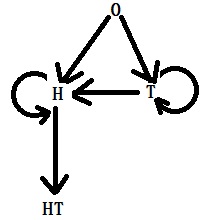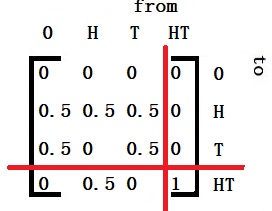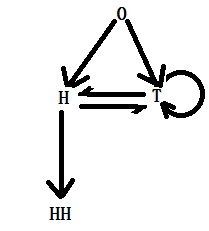Some time ago, we analytically estimated the expected waiting times of sequences HT and HH from coin-flipping games. Today, we calculate them using Markov chains.
Waiting time for HT
First, the notations, followed by the transition matrix:


Get Q, I – Q and its inverse


AA <- matrix(c(0.0, 0.5, 0.5,
0.0, 0.5, 0.0,
0.0, 0.5, 0.5), nrow = 3)
II <- matrix(c(1, 0, 0,
0, 1, 0,
0, 0, 1), nrow = 3)
BB <- II - AA
CC <- solve(BB)
NN <- c(1, 1, 1)
NN%*%CC 4 2 4The average waiting time from 0 to HT is the first element in the vector, i.e., 4.
Waiting time for HH



AA <- matrix(c(0.0, 0.5, 0.5,
0.0, 0.0, 0.5,
0.0, 0.5, 0.5), nrow = 3)
II <- matrix(c(1, 0, 0,
0, 1, 0,
0, 0, 1), nrow = 3)
BB <- II - AA
CC <- solve(BB)
NN <- c(1, 1, 1)
NN%*%CC 6 4 6The waiting time is 6.

